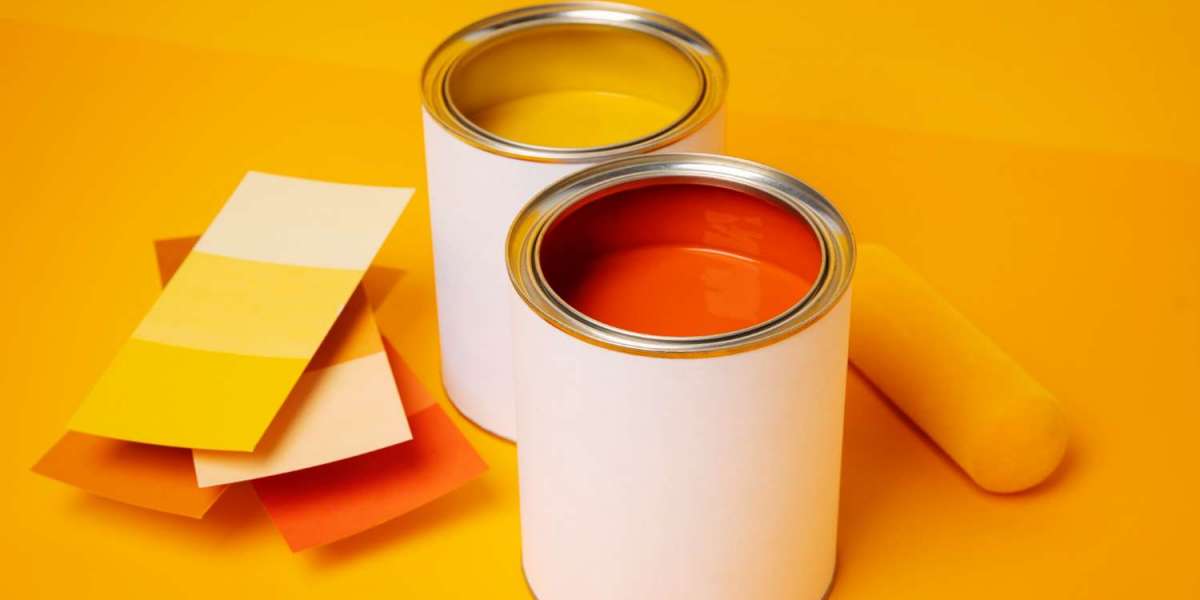Commercial painting is painting done in businesses, offices, warehouses, schools, hospitals, hotels, retail stores, and other places that are not homes. Commercial painters use special paints and techniques to paint the inside and outside of these buildings. Getting the best commercial painting services will bring fruitful results and you’ll end up getting the best looking place in your city.
Why Hire a Professional Commercial Painter?
It is best to hire a professional commercial painter instead of doing it yourself because they have the right equipment, knowledge, skills, and experience. They know how to properly prepare surfaces, choose paints, match colors, and apply paint so it comes out smooth and lasts a long time.
How Do You Find and Choose a Good Commercial Painter?
Ask people you know for painter recommendations. Search online for commercial painters in your area. Look at their websites for photos of past work and reviews from customers. Call at least 3 painters to ask questions, describe your project, and request estimates. Choose the one you feel most comfortable with.
What is Included in a Commercial Painting Bid or Estimate?
A commercial painting estimate should clearly state what is included:
Surfaces to be painted (walls, trim, ceilings, etc.)
Surface preparation is needed.
Brand and grade of paints/primers.
Number of coats to be applied.
Any special finishing work (smooth walls, textures, stencils, etc.)
Protection of non-painted surfaces
Clean up and debris removal.
Timeframe to complete the job.
Total cost breakdown.
Be sure to get estimates from 2-3 painters so you can compare. The lowest bid may not always be the best value if it leaves out important work.
How Do Commercial Painters Determine the Cost of a Job?
Commercial painters consider many factors when calculating project costs including:
Size of the space – wall square footage
Surface material – drywall, plaster, concrete, wood, etc.
Surface conditions – patching cracks, repairs needed, smoothing textures or block walls.
Preparation work – cleaning, sanding, removing wallpaper, protecting floors & furniture.
Paint type and grade – quality matters
Pattern complexity – simple wall colors vs. complex faux finishes
Access difficulty – higher ceilings, scaffolding needs
Number of colors and coats
Type of spraying equipment/manpower needed.
Be sure to get a detailed price breakdown from bidders.
How Long Does Commercial Painting Take?
For a typical 10,000-square-foot commercial space here are estimated time frames:
2-3 days – thorough prep work, patching cracks, light sanding, cleaning.
2-3 days - First coat painting, usually ceiling and then walls.
1 day – Second finishing coat, 12-24 hours to dry.
1 day - Third coat and touch-ups for a smooth professional-looking finish
1 day – clean up, moving back furniture, final details.
So, for a 10,000-square-foot office space with standard drywall, it may take 7-10 full working days. Bigger jobs can take weeks or months. Discuss timeframes with your painter.
Do You Have to Move Furniture and Equipment for Commercial Painting?
For the best results, furniture, supplies, equipment, and decorations should be cleared at least 4 feet away from all walls to allow easy access for interior paint services. Items that can’t be moved must be completely covered in special protective paint drop cloths. Commercial painting crews may be able to move lighter desks, tables, and filing cabinets if arranged in advance.
How are Floors, Furniture, and Other Surfaces Protected During Commercial Painting?
An experienced commercial painting contractor will protect all surfaces not being painted including:
Plastic sheeting is used to cover floors and baseboards.
Furniture is covered with thick drop cloths or plastic.
Computers, phones, and supplies are relocated away from paint areas.
Doors, windows, and frames will be masked off with painter's tape.
Signage or decorations remaining on walls are removed or masked.
Be sure your painter outlines their protection plan in their bid. A true professional commercial painter will take care in keeping non-painted surfaces clean, with no spills or splatters!
How Much Does Professional Commercial Painting Cost?
Commercial painting costs range from $2-$7 per square foot depending on many factors:
Location – Higher labor rates in big cities.
Surface material – Drywall, plaster, concrete, block, wood.
Surface condition – Prepping needed - scrubbing, repairs, removal of wallpaper.
Paint type and grade – More coats and higher quality are more expensive.
Access difficulty – Professional equipment for tall ceilings.
Pattern complexity – Solid colors are cheaper than intricate designs or faux finishes.
Insurance requirements for commercial property.
Be sure to get an itemized estimate from at least 2-3 bidders to compare accurately. The lowest bid may cut important corners.
How Long Does the Paint Need to Dry and Cure?
Paint dries to the touch in 1-2 hours typically but needs much longer to cure and be usable again based on full:
Ventilation – Open doors and windows speed drying.
Humidity – Dampness slows water evaporation from paint.
Room temperature.
Type of paint – Oils take longer than latex.
Sheen level – High gloss needs up to 30 days to cure!
Most latex commercial interior paint can be lightly used within 24 hours but may take 3-7 days to reach the hardness and durability needed for commercial use. Discuss re-occupancy timeframes with your painter.
How Can I Match Colors Accurately?
For commercial property owners matching existing paint colors, provide your painter with:
Color Swatch – Sample chips of current wall colors are best.
Photos – Use a phone camera showing various room shades.
Brand Info – Share old paint cans or record names/codes.
Room Locations – Note specific walls matching current décor.
With this color-matching info, most commercial painters can identify and blend new paint for a seamless uniform appearance throughout your space.
What Sheens or Finishes Can Be Done on Commercial Walls?
Commercial painters can provide all types of paint finishes beyond basic flat, eggshell, or semi-gloss. More durable options include:
Epoxies – Extra tough & glossy for kitchens & bathrooms.
Chalkboard paint – Matt black for writing that erases easily.
Dry erase – High gloss white surfaces use wet erase markers.
Textured patterns – Match existing Venetian plaster or skip trowel.
Metal coatings – Looks like rusted steel or hammered copper.
Anti-microbial – Contains silver to inhibit bacteria growth.
So don’t limit yourself to just standard wall colors. Many exciting commercial paint techniques can completely transform your space!
Who is Responsible for Fixing Paint Defects After the Job is Done?
Before interior painting begins, ask your contractor about warranties, guarantees, and policies on fixing paint defects that may happen after job completion. A thorough commercial painter should:
Provide contact info for reporting problems later.
Have a standard 30–90-day window for correcting issues.
Return and touch up minor drips or missed spots at no extra cost.
Take responsibility for major peeling or chipping due to improper prep work.
Know your painter’s policies upfront to avoid hassles getting defects fixed later down the road.
Why Hire a Professional Commercial Paint Contractor?
Commercial painting is very different to simply repainting your living room walls. Hiring professional commercial painters ensures:
Proper Licensing and Insurance – They carry liability and workers' compensation policies to protect your property and employees from damage or injury.
Commercial Grade Tools and Equipment – Sprayers, scaffolds, and lifts to paint safely, efficiently, and evenly on high ceilings and walls.
Skill & Experience – They’ve done office buildings for years and know what products and systems work best in your type of space.
Proper Surface Preparation – They skillfully deliver clean, smooth walls for long-lasting paint adhesion.
Efficient & Fast – With manpower, equipment, and know-how they minimize disruption to your business operations and productivity.
Warranties & Guarantees – They have stood behind their workmanship for years.
Don’t cut corners on such an important investment for your place of business. Hire true commercial painting specialists for the best looking, most durable results!








